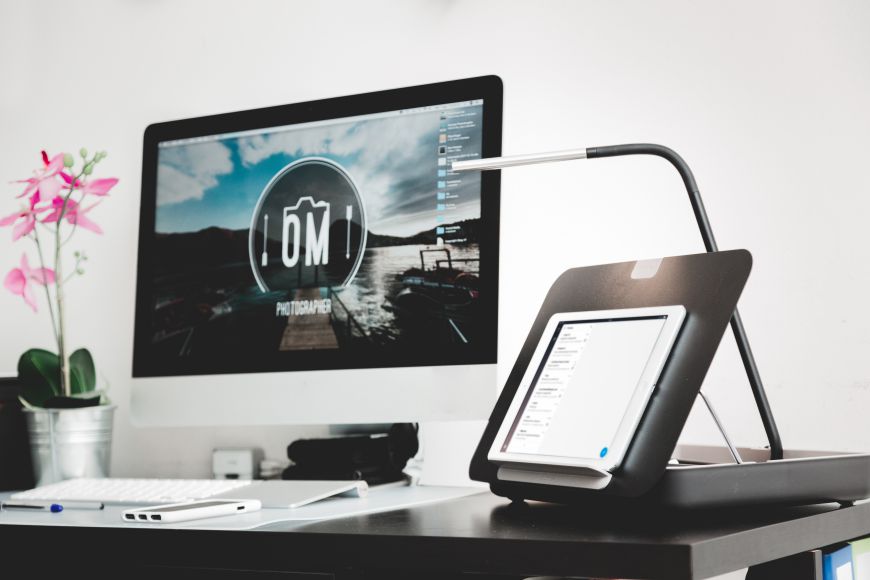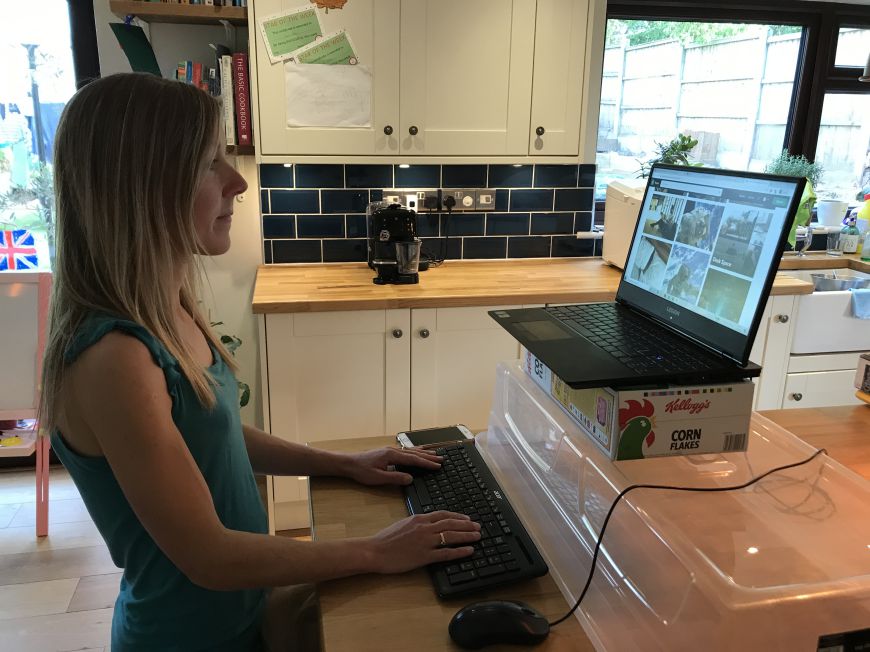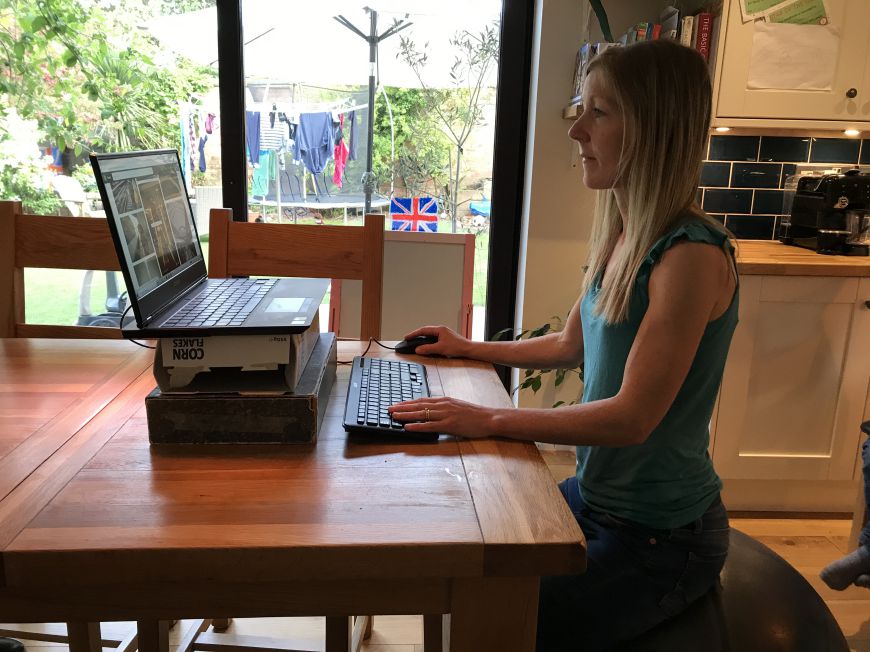Ergonomic self assessment at home
- 21 May 2020
- Laura Dutton

Looking after your neck and lower back is more important than ever as many of us have had to change and adapt our work environment and work station with the shift to working from home due to the current situation of lock down!! With so many people working from home for the first time, there's little doubt that many lack an ideal home-workplace set up to prevent injury. We have had to use tables and chairs which may not be suitable and certainly would have not been ergonomically assessed for us. Therefore, these work station set ups may predispose us to injury and place increased tension on the back and neck due to sitting in poor positions for prolonged periods. Our backs do not like prolonged positions at the best of times, never-mind working in a position which our back does not like.
Here's our top tips to you for helping your neck and back at home
1. Prepare your chair
If your work requires you to use the computer for prolonged periods in the day, ideally it would be best to invest in an ergonomic chair. If you are using an alternate chair ensure you have adequate back support. A lumbar roll, such as a rolled towel, can be placed in the small of your back and this works well to support your lumbar spine and sit your pelvis in a neutral position.
Ensure your hips and knees are at right angles, ideally with hips slightly higher than the knees with both feet are flat on the floor. If your chair is too small and your hips fall below your knees we can provide you with plenty of ways to tailor this to you including using cushions and foot rests.

2. Table
Ensure your work surface allows your arms to rest by your sides with your elbows at 90 degrees and in line with your forearms. A table that is too high will encourage your shoulders to be elevated and this will place more tension around your upper shoulders and neck. Ensure your wrists are in neutral.
Ensure you have some support for your forearms. This will offload your shoulders. However, you do not want to over reach which can place strain on your shoulders. Some use wrist rests to help support their hands and arms, however in some cases these can actually be more aggravatory for other areas including the wrist and the shoulder. Ideally it is best to be ergonomically assessed by our team as we can give you our recommended measurements for that ideal position to keeping the shoulders happy and discuss whether a wrist rest needs to be used and for how long.
3. Computer Screen
When using a laptop or computer ensure your screen is directly in front of you and not to the side. This will ensure your neck is kept in neutral posture.
Set the screen at the correct height for you. Ensure that the top 1/3 of the screen is at eye level. This will ensure your neck is in a neutral posture and avoids strain on the back of your necks and shoulders.
If using a laptop to do most of your work at home, it is best to invest in a separate keyboard/mouse and a laptop stand or separate monitor to allow you to keep a great ergonomic position.

4. Other accessories such as the phone and mouse
If using a phone and mouse, place them adjacent to the keyboard and on opposite sides to each other to alternate load.
If using a phone regularly invest in a head set to allow your hands to be free and keep your head in neutral. This will prevent side bending and placing unnecessary tension through the neck.
5. Alternate posture
Whilst working from home ideally it is great to keep changing your work posture from sitting to standing and other positions. Rather than sitting in the 'perfect spinal posture', the best posture for your back is your NEXT posture!! Our spines do not like the same position. It is like bending your finger back in the wrong direction and keeping it in that stretch for greater than 20-30 minutes. It would get very sore.
Try alternating standing and sitting. Raised surfaces which you could try standing to could range from the ironing board to the kitchen surface to using storage units.
When answering the phone or having a phone meeting try standing.
Drink plenty to keep you well hydrated but also drinking more means going to the toilet more, so another great excuse to move away from the work station.
Wobble cushion or Swiss ball- Try sitting on a wobble cushion or swiss ball for short periods throughout the day. This will give you a work out and help to keep your posture changing.


6. Breaks
Keep taking regular breaks to avoid postural related low back and neck pain and also to improve your alertness.
Eye breaks- Take your eyes of the screen every 20 minutes and look 20 metres away for 20 seconds.
Lunch breaks- Make sure you get up and move away from your working station and have 45 -60 minutes break involving some light exercise/walking.
7. Stretches and exercise
Whilst sedentary work is not great for our health and postures, make sure you do some stretches and light-moderate exercise to prevent that postural related low back, neck and shoulder pain and to keeping you fit and healthy. Try and incorporate a 30 minute exercise session within your day which could be a walk/run, or home exercise/yoga session.
We now offer a full tailored ergonomic work station set up for you in your home or office. We can tailor it to you and go into more depth including the correct set up with the ergonomic chair and ergonomic accessories and ways to adapt your home environment to prevent postural related low back, neck and shoulder pain. It can be performed over the video appointment which is our new Telehealth session. We will ask you for measurements in advance of your chair, table and desk and to provide us with a sideways view photograph. We are very excited to be able to offer this and we are confident we can get you set up well in your working environment. We will ensure you are also given some great office stretches to counteract the effects of the sedentary work.
Book online https://www.physio-form.co.uk/book-online

About Laura Dutton
Laura Dutton Physiotherapist
